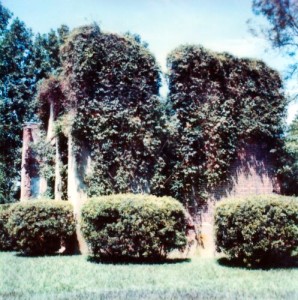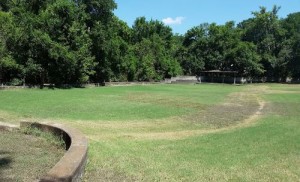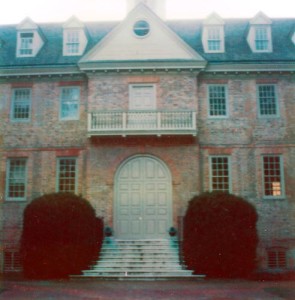Maybe I was a weird kid, but Jamestown was everything that didn’t impress me about Williamsburg. And there really wasn’t much to Jamestown. Jamestown was mostly ruins and empty lots that had once had buildings on them.
Jamestown, Virginia was the first permanent British colony in the United States, predating the arrival of the Pilgrims by 13 years.
Now, just a little personal background. I’m a Christian, but I grew up in a mainline Protestant denomination and our “youth pastor” was traditionally a seminary student. As a result, I wasn’t taught anything like what passes for Christianity in the greater consciousness of the United States. There wasn’t a single word about the Rapture or anything along those lines. Belief in God, yes, and the divinity of Jesus, of course, and, needless to say, the working of the Holy Spirit in our lives, but also interest, and trust, in the discoveries of science and a real desire to understand history, both of the Middle East and of the United States. As a result, I was not raised in a “The United States is a Christian country” mindset.
Looking at the original colonies, there’s Massachusetts, which was founded by Puritans who wanted a home for their new, “purified” Church of England; there’s Pennsylvania, which was a safe space for Quakers; Maryland, which was founded by Catholics, so you can point to them and say, “Look! Christianity!” But then there’s Rhode Island, which was founded by a Puritan minister, Roger Williams, who wanted to found a colony that explicitly had separation of church and state. In fact, within the first 30 years after the founding of Rhode Island, Jewish families from Spain started to move in. The Quakers and Catholics had experienced such profound persecution in England, that they encouraged freedom of religion, as well. So, other than Massachusetts, most of the other religion-based colonies were founded on freedom of religion, rather than on Christianity.
How does this connect to Jamestown? Well, Virginia wasn’t t religious at all. It was a commercial venture. As was, by the way, the Roanoke Colony in North Carolina. I don’t know agriculture was so much the original intent, I seem to recall it had more to do with the gold that was supposed to be here, and possibly involved piracy, but eventually these colonies grew tobacco and cotton, which led to that whole slave trade thing.
So, Jamestown. The place that started this whole United States thing, and of which there isn’t much left. Jamestown is where John Rolfe met his wife, Rebecca, better known as Pocahontas. There’s apparently some kind of fake village there, but I don’t remember that. I remember a shop that sold blown glass, which might have been the Glasshouse, but that I thought was kind of off by itself. While trying to make Jamestown profitable, they went into the manufacture of glass.
We bought three drinking glasses in that shop, though they weren’t particularly fancy, just sort of prolate spheroids (?) with the tops cut off. We noticed that the place where the pipe was attached were different and each chose one. Mine was my preferred drinking glass until I graduated from high school. I wonder where those glasses are now. Probably lost to history, since this was 35 years ago.

My most vivid memory, however, is standing on the shore of the James River, being told that the fort that started it all, Fort James, was now under the water somewhere. And apparently that information was incorrect. I’m not entirely sure where the park rangers got that impression, but apparently only one corner of the fort had disappeared into the water. They found the foundations of the fort in 1996.



